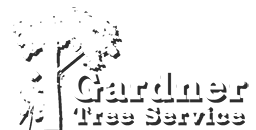In South Louisiana, hurricane season is as much a part of life as crawfish boils and Mardi Gras beads. And while we can’t control the weather, we can control how well we prepare for it—especially when it comes to the trees in our yard. Trees might look strong and stoic, but a weak limb or shallow root system can turn into a major hazard once those tropical winds start howling.
Here are the top signs your tree might be a hurricane hazard—and what you can do about it before it becomes a problem.
1. Leaning Trees (Especially Recently Tilted Ones)
A slight lean isn’t always an issue—some trees naturally grow that way. But if your tree has recently started leaning or if the tilt has gotten worse after heavy rains, you could be looking at a root system that’s lost its grip. During a hurricane, that tilt becomes a risk for toppling.
Pro tip: Trees leaning more than 15 degrees should be inspected by a pro immediately.
2. Cracks in the Trunk or Major Limbs
Visible cracks or splits—especially ones that run deep—are like red flags waving in the wind. These structural weaknesses can cause limbs (or the entire tree) to snap under pressure, turning your oak into an oversized projectile.
3. Dead or Hanging Limbs
Deadwood is brittle, unpredictable, and often the first thing to break off during a storm. If you’ve got dead branches up there—or worse, ones already broken but still hanging—you’re inviting trouble.
Solution: Get those limbs professionally pruned before the winds find them for you.
4. Fungus or Rot at the Base
If you spot mushrooms or soft, spongy bark near the base of the trunk, you might be dealing with root rot. A tree that’s rotting from the bottom up is like a house with a cracked foundation—it’s only a matter of time before it gives way.
5. Dense or Overgrown Canopy
A lush, full canopy might look beautiful in the spring, but come hurricane season, it acts like a sail. The thicker the top, the more wind it catches. Thinning the canopy allows wind to pass through, reducing the chance of your tree being uprooted or snapped.
6. Poor Branch Attachments (a.k.a. V-Shaped Crotches)
Some limbs grow out at tight angles, creating a narrow “V” shape where they meet the trunk. These areas are especially prone to splitting during high winds. Branches with wider, U-shaped angles tend to be much stronger.
7. Shallow or Exposed Roots
Healthy roots are the anchor of any strong tree. If your tree’s roots are shallow or visible above ground, they’re more vulnerable to being pulled up—especially in Louisiana’s saturated soils. Pay special attention after heavy rain when the ground is soft.
8. Proximity to Your Home, Cars, or Power Lines
Even a healthy tree can be a hazard if it’s too close to your house, driveway, or utility lines. It only takes one good gust to send a limb through your roof or a line down on your street. If your tree is within 10 feet of a structure, it’s worth an evaluation.
Final Thoughts: Don’t Wait for the Storm
By the time a hurricane is spinning in the Gulf, it’s often too late to do anything about your trees. Assessing them now—and addressing any red flags—can prevent costly damage, dangerous situations, and a whole lot of post-storm regret.
At Gardner Tree Service, we specialize in tree risk assessments, pruning, trimming, and removal services throughout the Greater New Orleans and Northshore areas. If you’re not sure whether your tree is safe, give us a call. We’ll give you peace of mind—root to crown.


